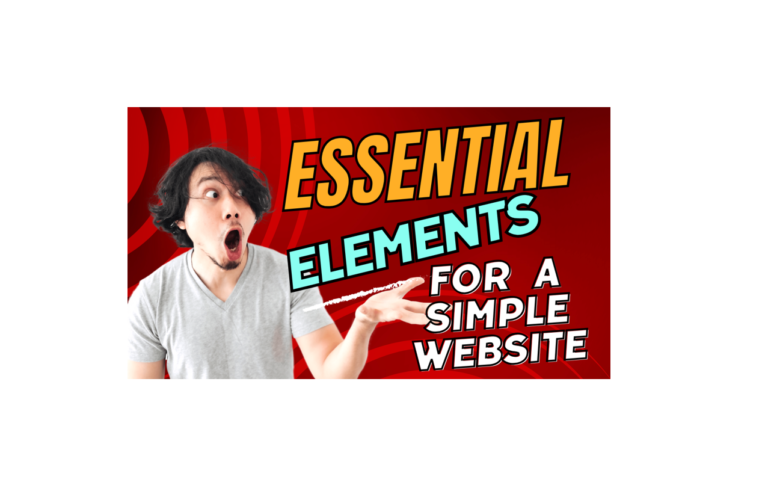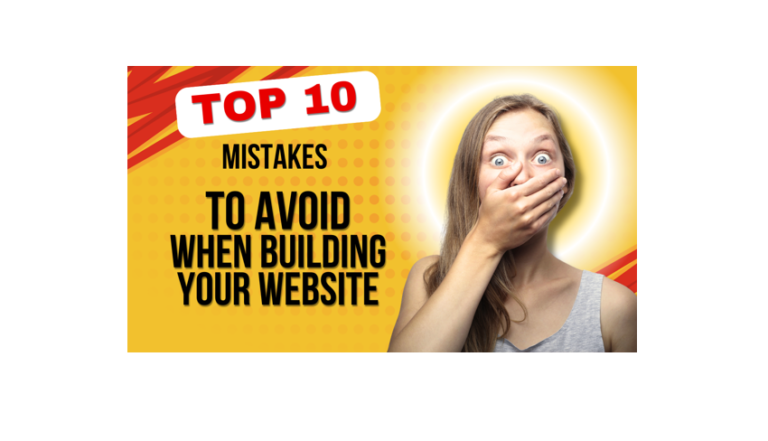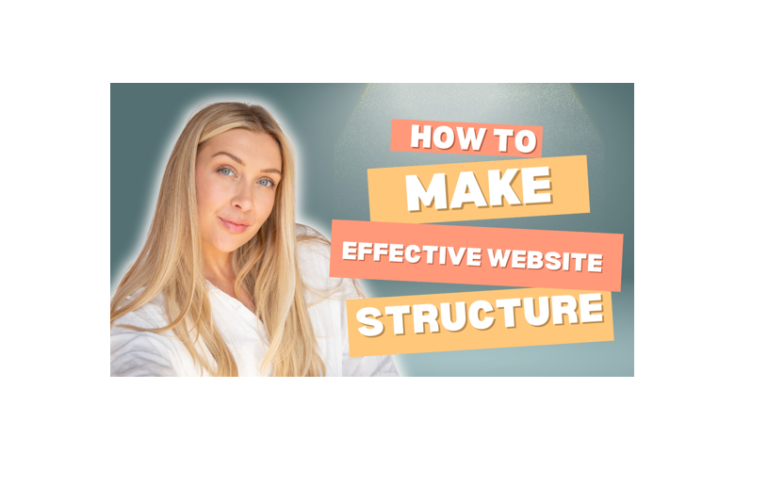
Basic Website Structure: Essential Elements for a Simple Website
A website must be structured well. In case the website is for your personal project, small business, or blog, a well-structured website will ensure that visitors find it easy to navigate around the website, get the right information easily, and engage with your content. Regardless of what type of website you are developing, there are a few basic pages that are found on most sites. These include the home page, the about page, the contact page, as well as a blog.

In this guide, we will explore each of these fundamental elements in detail and explain why they are important.
1. Homepage
When you open a website, the first page visitors will open is usually the homepage. It acts as a starter for your site and sets the overall mood for the rest of the experience. It should give users a quick compelling overview of what your website is about, making it easy to understand the value you offer. Generally, the page that gains the maximum number of visits on any website is the home page. Therefore, the design and content of the home page really do drive user retention and conversion rates.
Key Elements of a Homepage:
- Headline/ Introduction: a clear headline or tagline that describes the purpose of your website. Answer the question, “What is this website about?”
- Navigation Menu A menu with links to the main sections of the website (e.g., About, Blog, Services, Contact).
- Hero Section A prominent, highly visible section often at the top of the homepage, sometimes with a CTA like “Get Started” or “Learn More.”
- Brief Summary: A short description or preview of what visitors can expect to find on your website, services, products, blog posts, etc.
- Call-to-Action (CTA): That is a clear action that you want visitors to take based on your website; for instance, signing up for a newsletter, contacting you, or perhaps exploring your products.
- Visuals/Graphics: High-quality images, videos, or illustrations used to support the message of your website.
Why It’s Important:
- This means the home page is your site’s front door-welcoming visitors to your site and showing them where the great stuff is.
- It should give a sense of trust and encourage visitors to linger around and dig deeper.
- Clear calls-to-action tell the visitor what to do next-another way to open an account, buy a product, or contact you for more information.
2. About Page
Your about page is just as important because it gives context to the visitor of who you are, what you do, and why your website is there. Whether sharing a personal blog or providing products or services, an About page instills trust and credibility with the reader by understanding your mission, background, and values.
Key Elements of an About Page:
- Your Story or Mission: A brief narrative explaining who you are, what you do, and why you do it. This would include your company history and a mission statement for businesses, or perhaps a personal journey or purpose that is being represented by your personal website or blog.
- A vision and values statement will state what you stand for and what makes you different from others. It is the same thing as sharing values or vision, and this would help users relate to your website and build a connection.
- Team (if relevant): If you have a business or project that you work on with other people, you might include an introduction to who in your team is key.
- Credentials or Accomplishments: Any credential, award or achievement would define your knowledge or authority in this field.
- Visuals: A professional photo of yourself or your team could humanize your brand, and visitors would be able to connect more with the site.
Why It’s Important:
- An About page can give your website a human face, thus inculcating trust. Customers will want to know who they are dealing with before making a purchase or engaging with your content.
- Communication of your values means it’s much easier to get in touch with visitors’ minds or the mission when done.
- This gives credibility and authority about your experience, achievements, and unique selling points.
3. Contact Page
Probably, the second most important page of your site will be the Contact page. This allows visitors to send in their questions, comments, or what have you. If the contact page happens to be clean and accessible, it can make a huge difference in how users perceive a site.
Key Elements of a Contact Page:
- Contact Form: A simple, easy-to-use contact form that visitors can fill out which would contain fields for name, email, and message. Contact forms allow users to contact without ever having to leave your website.
- Email Address: If you have no contact form, then use an e-mail address that you want visitors to contact you directly. This could be generic like: [email protected] or more targeted [email protected].
- Phone Number: If you are running a business, having an active phone number is one way to communicate with clients who may wish to actually hear someone’s voice for their needs.
- Physical Address: If you have a store or office, putting the address up can make it simpler for people to go and check out the place.
- Social Media Links: If you have some social media sites like Facebook, Twitter, Instagram, or LinkedIn, put these in.
- Business Hours (optional): If your website represents a business with specific working hours, let users know when they can expect responses.
Why It’s Important:
- A Contact page allows you to remain reachable to a visitor who may wish to contact you for customer support, inquire about, or any other reason.
- It lets you present professionalism through a clear and easy way that people can contact you.
- For the company, a contact page will make the website look more reliable and makes prospective customers really want to take some action, make some purchases or ask for more.
4. Blog Page
A blog is an absolute necessity for any website that should be sending the visitors regular updates, news, or insights. The nature of information you’re making available – be it industry-specific data, educational content, or personal stories – a blog can help engage users, boost one’s SEO rankings, and establish authority in your niche.
Key Elements of a Blog Page:
- Blog posts: Main blog content with the most recent at the top, in reverse chronological order. Posts may vary in length and subject matter, but essential to your blog is that the information flows well, keeps readers captivated, and relevant to the needs of your audience.
- Categories: Posts can be categorized with regards to topics, for instance, Tech, Lifestyle, Business among others. This leads to helping the users have content in the specific fields they might be interested in.
- Tags: Tag words are the keywords associated with a specific posting; they help the users find related postings.
- Search Bar: A search feature which enables readers to find posts by keyword or topic.
- Sidebars (optional): Often a blog includes a sidebar with other information, perhaps some popular posts, recent posts, social network links, or an email subscription form
Why It’s Important:
- A blog will enable your website to turn out as a go-to source, where visitors get busy and stay longer on your site.
- This can help raise your level of SEO by offering relevant, keyword-rich content for the search engines to index.
- Updating your blog regularly will help you top the minds of potential customers by sharing industry news, tips, or even personal stories with them.
Conclusion: Putting It All Together
Although every website will have different needs based on the purpose of the site and its users, the four base elements in most sites are the homepage, about page, contact page, and blog. They all provide a structure that visitors expect and need in order to navigate and interact with your site easily.
Knowing how important these core pages are, you can have a website that is functional as well as suitable for your needs and capable of meeting goals – whether it’s creating a personal blog, creating a business website, or even an online portfolio.



